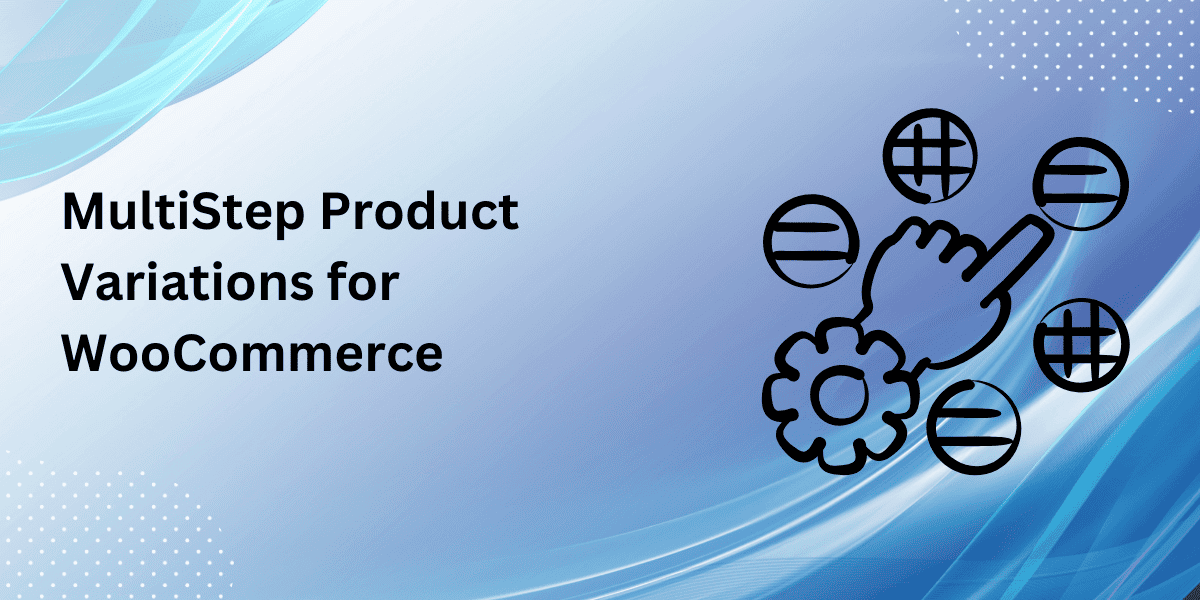
Modern online shopping isn’t just about clicking “Add to Cart.” Shoppers want their purchases to feel unique. This is where the Multistep Product Configurator for WooCommerce shines. It gives customers the ability to personalize products step by step, creating an engaging and streamlined buying experience.
Imagine your customers designing their dream products—choosing colors, sizes, materials, and additional features—all with an easy-to-use interface. This tool simplifies the customization process and keeps your customers excited about their purchase.
How a Multistep Product Configurator Works
A multistep product configurator breaks the customization process into clear, manageable stages. Instead of overwhelming shoppers with all options at once, it guides them through logical steps.
Stages of a Multistep Configurator
-
Choose the Base Product
Customers select the main item they want to customize. -
Add Specific Features
They adjust options like colors, materials, or sizes. -
Include Optional Upgrades
Offer upsells like additional accessories or premium finishes. -
Preview the Final Product
Before checking out, customers get a complete view of their creation.
This simple structure enhances the shopping experience while making personalization easy for everyone.
Why Your WooCommerce Store Needs It
1. Increased Customer Engagement
Interactive features grab attention and keep users exploring your store longer.
2. Higher Conversion Rates
Simplifying the buying process with clear steps reduces decision fatigue, encouraging customers to complete their purchases.
3. A Competitive Edge
Offering a customization option sets your store apart from others selling generic products.
4. Better Customer Satisfaction
Shoppers are more likely to love and remember products they’ve personalized themselves.
5. Cross-Selling Opportunities
Use optional upgrades or add-ons to boost your average order value.
Real-World Applications of Multistep Configurators
A Multistep Product Configurator for WooCommerce is versatile and works for various industries.
Fashion
Allow shoppers to personalize clothing with their choice of fabric, colors, and sizes.
Tech Gadgets
Help customers build laptops, PCs, or custom phone cases by selecting features step by step.
Home Decor
Enable users to design furniture, picking the type of wood, finish, and dimensions.
Gifts and Memorabilia
Offer personalized engraving, packaging, or custom messages for gifts.
How to Set Up a Multistep Configurator for Your WooCommerce Store
Creating a multistep configurator doesn’t require advanced coding skills. Follow these steps to integrate one into your store:
Step 1: Choose the Right Plugin
Popular options include:
- Product Configurator for WooCommerce
- Zakeke
- Fancy Product Designer
Each plugin has unique features, so pick one that matches your business needs.
Step 2: Design a Simple User Interface
Keep the design intuitive and straightforward. Ensure customers can easily move from one step to the next.
Step 3: Add High-Quality Visuals
Good images help customers see exactly what they’re creating. Offer a 360° view or zoom feature for added clarity.
Step 4: Test the Workflow
Run tests to identify and fix any issues with the configurator. Ensure it works smoothly across all devices.
Step 5: Launch and Promote
Once the configurator is live, promote it through email campaigns, social media, and on-site banners.
Features to Prioritize in a Configurator
The success of your configurator depends on its features. Look for these essentials:
- Mobile Responsiveness: Many users shop on their phones; ensure your configurator is mobile-friendly.
- Dynamic Pricing: Display real-time price updates as customers make selections.
- Progress Indicators: Show users how many steps are left to complete their design.
- Customizable Templates: Allow you to match the configurator’s design to your brand’s aesthetic.
- Live Previews: Let users see their customized product evolve in real time.
Success Tips for Multistep Configurators
1. Keep It Intuitive
Avoid overloading users with too many options or complex navigation.
2. Provide Clear Descriptions
Explain each step and option to help customers make informed decisions.
3. Offer Assistance
Include FAQs or live chat support to answer questions during the customization process.
4. Focus on Speed
Ensure the configurator loads quickly to prevent customer frustration.
5. Use Customer Feedback
Collect feedback after launch to refine and improve the configurator’s functionality.
Benefits of Personalization for E-Commerce
Personalization isn’t just a trend; it’s becoming the norm. Studies show that customers are willing to pay more for customized products. With a Multistep Product Configurator for WooCommerce, you’re not only meeting these expectations but also creating loyal customers who appreciate your attention to their needs.
The Future of Product Configurators
As e-commerce evolves, configurators are set to become smarter and more dynamic. Emerging trends include:
- AI-Driven Recommendations: Suggest options based on customer behavior or past purchases.
- Augmented Reality (AR): Let users visualize products in their space before buying.
- Voice Integration: Simplify steps with voice commands.
Integrating a configurator today ensures you’re ready for these innovations tomorrow.
Conclusion
The Multistep Product Configurator for WooCommerce is more than a tool—it’s an opportunity to revolutionize your online store. By empowering customers to personalize their purchases, you’re not just selling products; you’re creating memorable experiences.
Start leveraging this feature now and see how it transforms your store’s engagement, conversions, and customer satisfaction.
Frequently Asked Questions
1. Can I use a multistep configurator for digital products?
Yes, digital products like eBooks or online courses can also benefit from customization options.
2. Is coding knowledge required to set up a configurator?
No, most plugins are user-friendly and come with simple drag-and-drop functionality.
3. Will a configurator slow down my website?
As long as you choose a lightweight plugin and optimize your website, performance shouldn’t be an issue.
4. Are configurators suitable for subscription-based products?
Absolutely! You can use them to let users customize subscription plans or services.
5. Can I offer discounts based on selected customizations?
Yes, many configurator plugins allow you to set pricing rules and apply discounts dynamically.





Leave a Reply